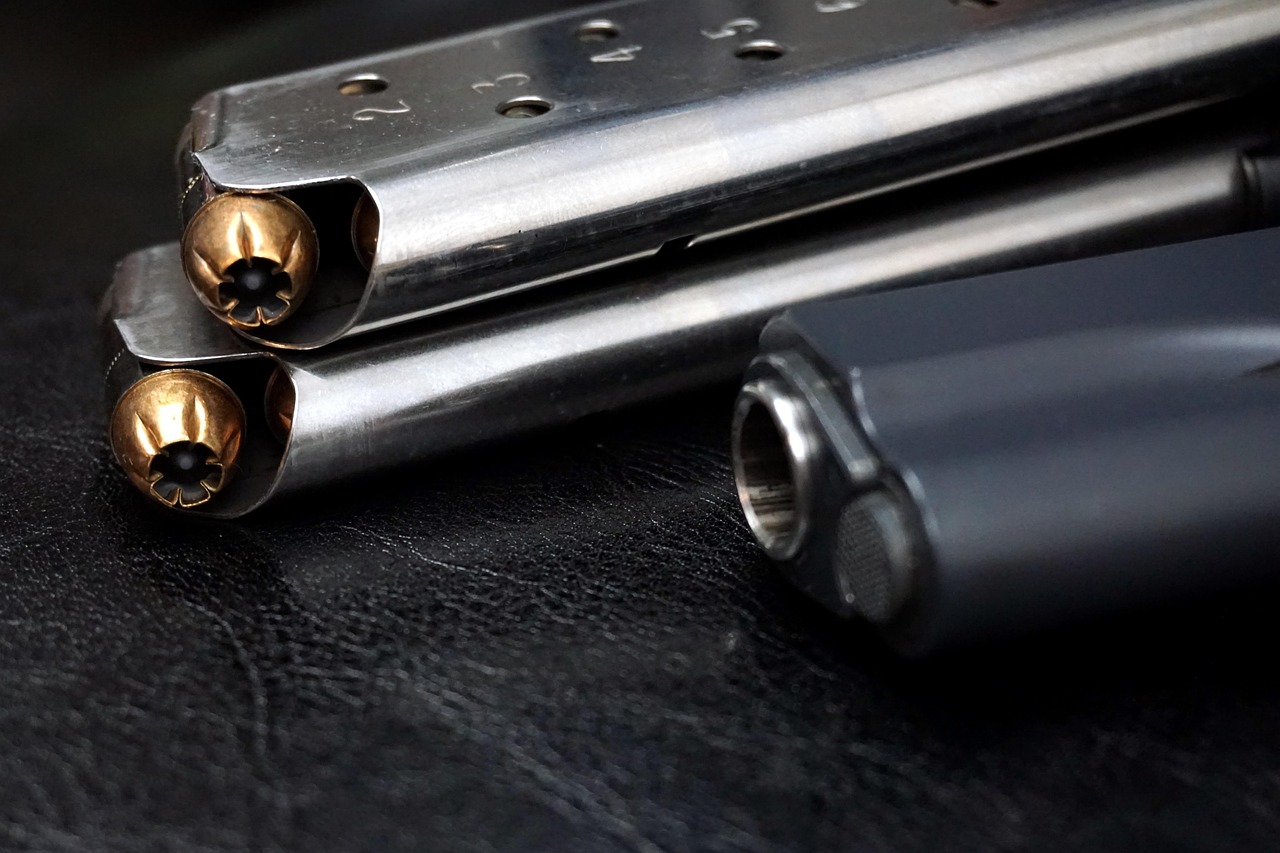Contemporary armed self-defense discourse invariably centers on caliber and load. There are strong arguments for the deployment of the largest and hottest round for which the operator can manage recoil, however, the decision to carry extra ammunition is often overlooked or dismissed as excessive. I have instructed hundreds of LEOs and civilian concealed carry permit holders. When I have suggested “plenty” of extra ammunition the responses have all too often been something along the lines of, “I’m not going to war.” That reflects a bit of ignorance about how a gunfight unfolds and what it takes to end the fight. A critical examination of both statistical data and case histories reveals that even skilled and well-armed individuals can find themselves outgunned or under-“ammo’d” in a dynamic threat scenario. The increasing popularity of concealed carry permits, LEO carry off-duty and the retired LEO concealed carry privilege have prompted inquiry into best practices for armed self-defense. In addition to caliber and load, training is generally devoted to handgun selection, holster retention, and legal use-of-force standards. Ammunition capacity and the advisability of carrying spare magazines or speedloaders remain relatively underadressed in training discourse. Given the limited round capacity of many commonly carried handguns (more specifically revolvers and ultra-compact semi-automatics), the decision to carry extra ammunition should be viewed not as paranoia but as a pragmatic measure informed by data and experience.
Self-defense encounters are by nature unpredictable, high-stress, and often involve more than one assailant. Pursuant to a 2021 study by the FBI’s Uniform Crime Reporting (UCR) Program, 29.2% of aggravated assaults involving firearms included multiple offenders. In 2020, the Bureau of Justice Statistics reported that about 42% of violent crime incidents involved multiple offenders when a weapon was present. Thus, even the most proficient shooter may expend a magazine’s worth of ammunition without successfully neutralizing the threat. Physiological degradation (e.g., tunnel vision, elevated heart rate, loss of fine motor skills) commonly associated with life-threatening confrontations, feed malfunctions, missed shots, and the necessity of suppressive or warning fire invariably increase the likelihood of depleting a single magazine. Further, the FBI’s 2014 study, Violent Encounters: A Study of Felonious Assaults on Our Nation’s Law Enforcement Officers, found that law enforcement officers involved in close-range gunfights typically fired an average of THREE TO FIFTEEN ROUNDS per encounter, depending on the length and complexity of the incident. Civilians can expect a similar or perhaps more chaotic engagement profile, WITHOUT the backup of trained officers. Here is what can happen, . . .
The 1986 FBI Miami Shootout
Perhaps the most widely studied gunfight in modern law enforcement history, the 1986 Miami shootout between eight FBI agents and two heavily armed suspects (Michael Platt and William Matix) highlights the inadequacy of limited ammunition under extreme duress. Platt and Matix had previously committed a series of violent robberies and were considered exceptionally dangerous. On April 11, 1986, the confrontation began when the FBI attempted a felony traffic stop. A violent gunfight ensued that lasted approximately four minutes. Over 145 rounds were exchanged in total. Both suspects were ultimately killed, but not before Platt fatally shot two agents (Benjamin Grogan and Jerry Dove) and wounded five others. To my point, multiple FBI agents ran dry during the gunfight. Some carried Smith & Wesson revolvers with six-round capacities and no speedloaders. Grogan and Dove were armed with semi-automatic pistols but were struck before they could effectively reload. The agents’ insufficient ammo reserves combined with inadequate armor were cited as primary factors that compromised their tactical effectiveness and resulted in the horrific end. This incident directly influenced the FBI’s subsequent transition to higher-capacity semi-automatic handguns and reinforced the importance of carrying spare magazines. Civilian CCW permit-holders should find this instructive.
The Lance Thomas Jewelry Store Shootings (Los Angeles, Early 1990s)
Lance Thomas, a watch dealer in Los Angeles, became known for surviving multiple armed robberies over a six-year period by preparing himself with an armed defense strategy. In a series of documented encounters, Thomas used multiple semi-automatic pistols stored at fixed positions behind his jewelry counter. His first major shootout (1991) involved four assailants. Thomas shot and killed two, while the others fled. He fired twenty rounds and sustained injuries himself. Had Thomas relied on a single firearm and no extra ammunition, he would have been outgunned and likely outmaneuvered. His discipline of positioning multiple loaded firearms allowed him to stay in the fight after emptying his first weapon. In subsequent interviews, Thomas credited redundancy both in firepower AND AMMUNITION with his survival.
The 2012 Portland Mall Shooting (Clackamas Town Center, Oregon)
On December 11th, 2012, Jacob Roberts opened fire with a stolen AR-15 rifle inside the Clackamas Town Center Mall, killing two and injuring one before committing suicide. A civilian CWP holder, Nick Meli drew his Glock 22 but did not fire due to the presence of bystanders behind the assailant. Nonetheless, Meli’s actions caused Roberts to retreat and clearly disrupted his attack plan. Meli was carrying a full-sized pistol with a standard-capacity magazine and a spare. Though no rounds were discharged by Meli, this case underscores that threats can evolve unpredictably. Had Meli been forced to engage, a single magazine might not have sufficed against a belligerent with thirty+ rounds of rifle-class ammo. The presence of extra ammunition was a tactical necessity even in a situation where it ultimately was not deployed.
While many self-defense shootings involve only a few rounds fired (two or three rounds per an NRA and GunFacts.org study), there are notable exceptions. A 2006 study by the Department of Justice found that in about 25% of self-defense firearm uses, more than five rounds were fired. Given that many popular concealed carry firearms (e.g., Smith & Wesson J-frame revolvers, micro-semiautos, etc.) hold between five to eight rounds, the potential for depleting a magazine before the threat is neutralized is significant. Shooting accuracy under stress deteriorates dramatically. A study published by the Force Science Institute found that average hit rates in real-world shootings were often below 20%. In multi-attacker scenarios, or when cover is limited, the probability of needing more than a single magazine increases substantially. Ironically, civilian use of force is just as accurate as LEO but even so, a 20% hit rate SUCKS. As a corollary to the physiological deterioration under stress (grip problems, sweaty palms, shaking, loss of trigger discipline), the likelihood of a malfunction increases. Tactically, spare magazines serve as mitigation against failure-to-feed or magazine-related stoppages. A fast magazine swap is often the quickest solution to a failure that cannot be cleared through tap-rack-bang.
My Point
I am not throwing cold water on “bigger and faster” rounds. Bullets neutralize an attacker by hydrostatic shock and traumatic tissue damage. A heavier round moving faster does a good job of creating both. Overpenetration concerns not withstanding, most seasoned operators will concur that if he or she could hide a howitzer under a shirt, that would be a panacea. Nonetheless, carrying extra ammunition is not a matter of overzealousness but rather practical readiness in light of real-world engagements and empirical data. While many defensive gun uses are resolved with a few rounds (or perhaps none at all), outlier incidents, like the FBI Miami shootout, the Lance Thomas case, and the Portland Mall shooting demonstrate the catastrophic consequences of being under-loaded in a lethal encounter. The decision to carry a spare magazine or speedloader might be the only thing standing between survival and tragedy. For those who accept the moral and legal responsibility of armed self-defense, carrying extra ammunition is justified and highly advised.
References
FBI Uniform Crime Reporting Program. (2021). Crime in the United States: Aggravated Assault Statistics.
Bureau of Justice Statistics. (2020). Criminal Victimization, 2019.
Federal Bureau of Investigation. (2006). A Study of Felonious Assaults on Our Nation’s Law Enforcement Officers: 2001–2005.
Marshall, E. (1986). FBI Miami Shootout Analysis, FBI Forensics Division, internal report.
Kleck, G. (2005). Armed: New Perspectives on Gun Control. Prometheus Books.
Force Science Institute. (2014). Officer-Involved Shooting Accuracy Studies.
Thomas, L. (1995). Interview with Guns & Ammo, reprinted in The Best Defense: Real Stories of Survival.

